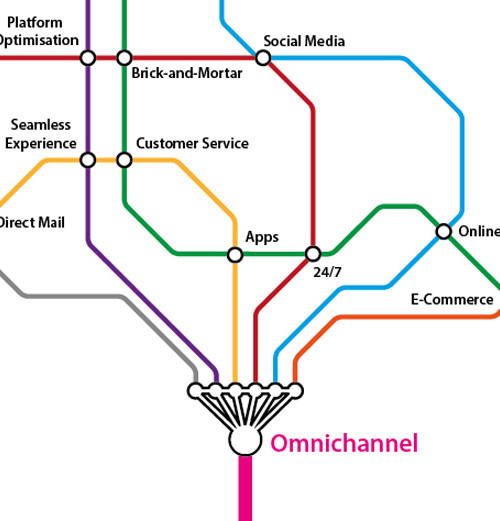When the hospital sends you an appointment reminder or you receive an up to the minute text alert to tell you your taxi has arrived and where, or an update on the appointment of the service engineer, what’s happening?
As a customer, you’re getting genuine benefit in terms of convenience from one of the most powerful and ubiquitous communications media available: the SMS message.
Not all businesses are using SMS this well. Many are familiar with the technology, but haven’t mastered the techniques to be applied with respect to it – by which I mean, these examples of best practice are all about the use of the right channel, rather than the application of a particular technology – as well as careful use of customer data.
The problem is modern business has to be omni channel now – which effectively means keeping the conversation with customers ‘flowing,’ in a context-appropriate way by switching seamlessly between different communication media.
Let’s consider some of the best ways to achieve omni channel success:
Timing is everything. A common error when trying to contact customers is to reach out too late in the day. Morning time, even before 9am, can be the most successful time to engage and the time most conducive to contact success.
Different strokes for different folks. Different communication methods work better for certain purposes and for different demographics; for customers in arrears and the younger generation in general, voice calls don’t work, for instance. And the reality is, contacting customers using a communications medium they are uncomfortable with, simply results in them ignoring any contact attempts. Here, SMS can add real value, as 50% of the customers that avoid contact via traditional methods will come back via an SMS conversation. The bonus, is, of course, that once they are engaged they can always be guided into another channel, as required.
Data dues. The bottom line here is that companies needs to have the correct data strategy. A strategy for getting the data to the relevant technologies at the right times so managers can access, analyse, report, slice and dice, deep dive into data to give the insights that are needed and better manage customer contact campaigns.
Risky business. Embracing the unknown can be anathema to most businesses – but it is the mark of good business practice. Without taking risks, it’s impossible to make progress. That does mean having to accommodate the occasional failure, but along with that the business will make great strides forward. That being said, exercising a bit of caution is always wise. Use a control, as a reference point to compare – and try one thing at a time.
The channel shifter. Finally, the different communication channels are proliferating and their uses are evolving – all of which need to be carefully monitored. At the same time as responding to these nuances, a consistent brand identity needs to be established across all channels in order to maintain quality standards across all customer interactions.
To sum up, then, attending to the different communication channels, and their evolving natures and establishing what works best for whom – while also keeping brand identity firmly in mind are good omni-channel rules to live by.
Remember to take risks and don’t forget the power of SMS – nor the fact that the early caller catches the worm!






